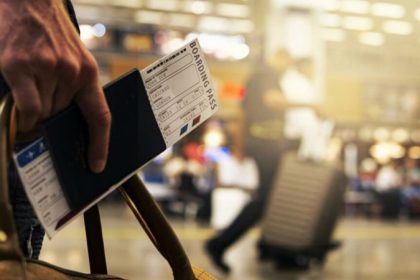If you are also interested in running, it is better to familiarize yourself with the types of suitable shoes before starting. Below we discuss the types of running shoes and their features.
disclaimer: The editors of Kajaro did not participate in the preparation of this advertising content and are not responsible for its accuracy
Running is one of the most popular sports activities around the world that requires proper footwear to improve performance and reduce the risk of injury. Choosing the right running shoes plays a key role in comfort, stability and prevention of physical problems. In this article, we will review different types of running shoes and explain what conditions and needs each type of shoe is suitable for.
1. road running shoesRoad Running Shoes)
Road shoes are the most widely used type Running shoes and are designed to be used on smooth and flat paths such as sidewalks, asphalt roads and treadmills. These shoes have proper support for shock absorption and special cushioning that provides comfort over long distances. Road shoes are light and flexible, and due to the smooth structure of their soles, they allow the runner to move smoothly and naturally on hard surfaces.
- Advantages: Lightness, comfort, suitable for long distances
- Disadvantages: Less stability on uneven surfaces or off-road tracks
2. trail running shoesTrail Running Shoes)
Trail running shoes Designed for people who run on natural and uneven trails such as mountains, forests and dirt tracks. These shoes are made of more durable materials and have slip-resistant soles to provide better stability on challenging trails. Also, trail shoes usually have protectors on the front of the shoe to protect the feet from rocks and branches.
- Advantages: High resistance, suitable for uneven surfaces, protect the feet
- Disadvantages: Heavier than road shoes and less flexible
3. minimalist running shoesMinimalist Running Shoes)
Minimalist shoes are designed to evoke the feeling of running barefoot. These shoes have very thin and flexible soles that allow you to have a better feel of the ground under your feet and run more naturally. These types of shoes are often suitable for people who are looking to strengthen their leg muscles and increase flexibility in running. However, using minimalist shoes requires gradual adaptation, as your muscles and joints may not be used to this type of running.
- Advantages: The most natural form of running, strengthening leg muscles
- Disadvantages: The need for gradual adaptation, the possibility of injury in case of incorrect use
4. Running shoes with lots of cushioning (Maximalist Running Shoes)
Cushioned running shoes are designed to provide runners with maximum support and shock absorption. These shoes have thicker layers of foam in their soles and are suitable for runners who are looking for more comfort and less stress on joints and muscles. These types of shoes are especially recommended for people who run long distances such as marathons.
- Advantages: High shock absorption, suitable for long distance runners
- Disadvantages: More weight and less feeling of the ground underfoot
5. racing running shoesRacing Shoes)
Racing shoes are the lightest and fastest type of running shoes designed for professional and competitive runners. These shoes have low cushioning and a thin sole that allows the runner to run at maximum speed. Racing shoes are usually used for shorter runs and faster races, and their main focus is on increasing speed and performance.
- Advantages: Lightweight, suitable for high speed
- Disadvantages: Less cushioning and support, suitable for short distances
6. Motion Control Running ShoesMotion Control Shoes)
These types of shoes are designed for runners who have flat feet or movement problems such as Pronate too much are Motion control shoes have a more stable structure on the inside of the foot and help prevent excessive rotation of the foot during running. These shoes are usually heavier than regular shoes, but because of the extra support they provide, they can help reduce the chance of injury in runners who suffer from pronation problems.
- Advantages: More support for overpronated runners
- Disadvantages: Heavier and less flexible
7. stability shoesStability Running Shoes)
Stability shoes are perfect for runners who have mild pronation and are looking for a combination of support and flexibility. These shoes have moderate support in the midfoot to prevent excessive rotation of the foot, but still have enough cushioning for comfort during running. These types of shoes are a good choice for runners looking for an all-round and well-balanced shoe.
- Advantages: Good combination of support and flexibility
- Disadvantages: May not be enough for runners with severe mobility issues
8. Running shoes with high heelsHeel-Toe Drop Shoes)
High-heeled shoes (or shoes with drop Ziad) are designed for runners who tend to land on their heels. These shoes have more height in the heel area, which takes pressure off the heel and makes it easier for runners to run with a heel-toe running style. However, wearing these types of shoes may help some runners avoid problems related to heel landing.
- Advantages: Suitable for heel runners
- Disadvantages: Not suitable for runners with different running styles
9. cross training shoesCross Training Shoes)
These types of shoes are suitable for runners who, in addition to running, do other exercises such as bodybuilding or strength training. Cross-training shoes have firmer soles and provide more support on the sides of the foot to protect foot stability during various exercises. These shoes are a versatile option, but they may not be as comfortable for long runs as road shoes.
- Advantages: Suitable for multiple exercises
- Disadvantages: Lack of cushioning for long runs
Which running shoes are right for you? A guide to choosing the ideal running shoes
Choosing the right running shoes is one of the key factors in improving performance, increasing comfort, and preventing injuries during training and competitions. Considering the different types of running shoes that we mentioned in the previous article, it is important to know which shoes match the running style and physical needs of each person. In this article, we will take a deeper look at how to choose the right running shoes so that you can make the best choice based on your characteristics and needs.
1. Checking your foot type (Normal, Flat, High-Arched)
The first step to choosing the right running shoes is knowing your foot type. Legs are generally divided into three categories:
- normal foot: People with normal feet usually have a moderate arch in the middle of their feet and when running, they naturally distribute pressure over the entire foot. These people usually wear shoes stability or normal They have a fit that provides a good balance between support and flexibility.
- flat footFlat Feet): People with flat feet usually suffer Pronate too much are, in the sense that their feet turn inwards. These people need shoes motion controlMotion Control) They provide more support to the inside of the foot and help reduce abnormal rotation.
- arched footHigh-Arched Feet): People with arched feet usually put more pressure on the joints and muscles due to not absorbing enough impact in their feet. For this group, shoes with lots of cushioning, such as MaximalistIt is recommended to reduce the pressure on the legs.
2. Identify your running style
Every runner has a unique running style that should be considered when choosing shoes. The style of running usually depends on the way the foot lands on the ground and the pressure on the feet:
- heel landingHeel Strike): Most runners land heel first. This style of running requires shoes with high drop (the heel is higher than the toe) to reduce the pressure on the heel and leg. Road shoes or shoes with more cushioning can be suitable for this style of running.
- front foot landingForefoot Strike): Runners who land on their forefoot usually look for shoes with Less drop or even Minimalist shoes are These shoes allow the foot to move more naturally and more smoothly and put more pressure on the foot muscles.
- natural runningMidfoot Strike): In this running style, runners land with the midfoot and the pressure is distributed evenly between the heel and the forefoot. shoes stability Or shoes with moderate cushioning can be the best choice for this style of running.
3. Environmental conditions of running
Environmental conditions are one of the important factors in choosing running shoes. Are you more of a road runner or a trail runner?
- Roads: If you mainly run on roads, treadmills or sidewalks, road shoes with a light design and good cushioning are the best choice for you. These shoes provide good stability and shock absorption and are suitable for hard and flat surfaces.
- Trails: If you like to run in nature and on dirt and uneven paths, trail shoes with durable and protective soles are a good option. These shoes have more stability and higher resistance to slip and impact and protect the feet against stones and natural obstacles.
4. Purpose and type of exercise
Running shoes should be chosen based on the type of exercise and your goal. For runners participating in sprints or short runs, choosing lighter and faster shoes such as Racing shoes It is recommended. But if your goal is long training or marathon runs, it is better to have a shoe with more support and cushioning, such as Shoes with lots of cushioning select
- Short and fast runs: In this type of running, light and light shoes can increase your speed. Racing shoes They usually have a minimalist design and less cushioning to allow you to run faster and more efficiently.
- Long runs: For runners who run long distances, it is important to choose shoes with more shock absorption and comfort. Shoes with a lot of cushioning Maximalist Shoes They are very suitable for preventing fatigue and extra pressure on joints and muscles.
5. The fit of the shoe with the shape of the foot
One of the most important aspects of choosing running shoes is their fit to your foot shape. The shoe should fit properly on the foot and not be too tight or too loose. This helps to reduce friction and prevent blisters and skin damage.
- toe: The front part of the shoe should have enough space so that the toes can move easily. If there is not enough space, the pressure on the toes may increase and cause pain.
- the heel: The heel of the shoe should be firm to prevent the heel from slipping inside the shoe. Also, this part should provide enough support to prevent the foot from turning sideways.
6. Considerations related to the material and durability of shoes
The durability of running shoes depends on the material and quality of their construction. If you are a runner who trains regularly, durable and high-quality shoes are a smart choice. Here are some tips about the type of shoes:
- Shoe upper: It should be made of light and breathable material to prevent excessive sweating of the feet. Also, in trail shoes, the uppers should be more durable and protective.
- shoe sole: The soles of the shoes must be resistant to wear and slip. Trail shoes usually have raised soles that provide more stability on dirt and rocky trails.
7. Tips for replacing shoes
Running shoes wear out over time and lose their effectiveness. It is usually recommended to change your shoes after running 500 to 800 kilometers. Signs that it’s time to replace your shoes include wear on the soles, reduced cushioning, and pain or discomfort in your feet.
conclusion
Choosing the right running shoes requires attention to individual needs, running style and environmental conditions. By knowing your foot type, running style, and training goals, you can choose a shoe that will not only improve your performance, but also prevent potential injuries. Choosing the right shoes will make your running experience more enjoyable and efficient. In the end, as an offer, you can find all kinds of sports equipment from running shoes to Backpack and running vest and climbing equipment with the best conditions on the website mountain wave Choose and buy. The professional experts of this collection are always ready to serve the athletes by providing expert advice, 7-day money back guarantee and free shipping.
RCO NEWS


















